Substance P mediates excitatory interactions between striatal projection neurons
- PMID: 19369564
- PMCID: PMC6665341
- DOI: 10.1523/JNEUROSCI.6020-08.2009
Substance P mediates excitatory interactions between striatal projection neurons
Abstract
The striatum is the largest nucleus of the basal ganglia, and is crucially involved in motor control. Striatal projection cells are medium-size spiny neurons (MSNs) and form functional GABAergic synapses with other MSNs through their axon collaterals. A subpopulation of MSNs also release substance P (SP), but its role in MSN-MSN communication is unknown. We studied this issue in rat brain slices, in the presence of antagonists for GABA, acetylcholine, dopamine, and opioid receptors; under these conditions, whole-cell paired recordings from MSNs (located <100 microm apart) revealed that, in 31/137 (23%) pairs, a burst of five spikes in a MSN caused significant facilitation (14.2 +/- 8.9%) of evoked glutamatergic responses in the other MSN. Reciprocal facilitation of glutamatergic responses was present in 4 of these pairs. These facilitatory effects were maximal when spikes preceded glutamatergic responses by 100 ms, and were completely blocked by the NK1 receptor antagonist L-732,138. Furthermore, in 31/57 (54%) MSNs, a burst of 5 antidromic stimuli delivered to MSN axons in the globus pallidus significantly potentiated glutamatergic responses evoked 250 or 500 ms later by stimulation of the corpus callosum. These effects were larger at 250 than 500 ms intervals, were completely blocked by L-732,138, and facilitated spike generation. These data demonstrate that MSNs facilitate glutamatergic inputs to neighboring MSNs through spike-released SP acting on NK1 receptors. The current view that MSNs form inhibitory networks characterized by competitive dynamics will have to be updated to incorporate the fact that groups of MSNs interact in an excitatory manner.
Figures
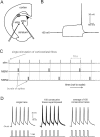
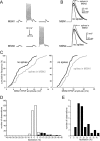

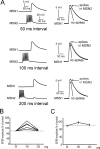
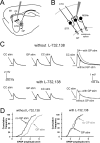
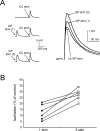


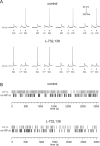
Similar articles
-
Opioidergic interactions between striatal projection neurons.J Neurosci. 2011 Sep 21;31(38):13346-56. doi: 10.1523/JNEUROSCI.1775-11.2011. J Neurosci. 2011. PMID: 21940429 Free PMC article.
-
Substance P depolarizes striatal projection neurons and facilitates their glutamatergic inputs.J Physiol. 2008 Apr 15;586(8):2143-55. doi: 10.1113/jphysiol.2007.148965. Epub 2008 Feb 28. J Physiol. 2008. PMID: 18308827 Free PMC article.
-
Dopaminergic treatment weakens medium spiny neuron collateral inhibition in the parkinsonian striatum.J Neurophysiol. 2017 Mar 1;117(3):987-999. doi: 10.1152/jn.00683.2016. Epub 2016 Dec 7. J Neurophysiol. 2017. PMID: 27927785 Free PMC article.
-
Differential modulation of excitatory and inhibitory striatal synaptic transmission by histamine.J Neurosci. 2011 Oct 26;31(43):15340-51. doi: 10.1523/JNEUROSCI.3144-11.2011. J Neurosci. 2011. PMID: 22031880 Free PMC article.
-
Anatomy of adenosine A2A receptors in brain: morphological substrates for integration of striatal function.Neurology. 2003 Dec 9;61(11 Suppl 6):S12-8. doi: 10.1212/01.wnl.0000095205.33940.99. Neurology. 2003. PMID: 14663003 Review.
Cited by
-
Compartmental function and modulation of the striatum.J Neurosci Res. 2019 Dec;97(12):1503-1514. doi: 10.1002/jnr.24522. Epub 2019 Sep 5. J Neurosci Res. 2019. PMID: 31489687 Free PMC article. Review.
-
Opioidergic interactions between striatal projection neurons.J Neurosci. 2011 Sep 21;31(38):13346-56. doi: 10.1523/JNEUROSCI.1775-11.2011. J Neurosci. 2011. PMID: 21940429 Free PMC article.
-
Substance P Weights Striatal Dopamine Transmission Differently within the Striosome-Matrix Axis.J Neurosci. 2015 Jun 17;35(24):9017-23. doi: 10.1523/JNEUROSCI.0870-15.2015. J Neurosci. 2015. PMID: 26085627 Free PMC article.
-
A Nucleus Accumbens Tac1 Neural Circuit Regulates Avoidance Responses to Aversive Stimuli.Int J Mol Sci. 2023 Feb 22;24(5):4346. doi: 10.3390/ijms24054346. Int J Mol Sci. 2023. PMID: 36901777 Free PMC article.
-
Ethanol affects striatal interneurons directly and projection neurons through a reduction in cholinergic tone.Neuropsychopharmacology. 2011 Apr;36(5):1033-46. doi: 10.1038/npp.2010.241. Epub 2011 Feb 2. Neuropsychopharmacology. 2011. PMID: 21289603 Free PMC article.
References
-
- Albin RL, Young AB, Penney JB. The functional anatomy of disorders of the basal ganglia. Trends Neurosci. 1995;18:63–64. - PubMed
-
- Alexander GE, Crutcher MD. Functional architecture of basal ganglia circuits: neural substrates of parallel processing. Trends Neurosci. 1990;13:266–271. - PubMed
-
- Almeida TA, Rojo J, Nieto PM, Pinto FM, Hernandez M, Martín JD, Candenas ML. Tachykinins and tachykinin receptors: structure and activity relationships. Curr Med Chem. 2004;11:2045–2081. - PubMed
-
- Baranauskas G, Traversa U, Rosati AM, Nistri A. An NK1 receptor-dependent component of the slow excitation recorded intracellularly from rat motoneurons following dorsal root stimulation. Eur J Neurosci. 1995;7:2409–2417. - PubMed
-
- Bar-Gad I, Morris G, Bergman H. Information processing, dimensionality reduction and reinforcement learning in the basal ganglia. Prog Neurobiol. 2003;71:439–473. - PubMed
Publication types
MeSH terms
Substances
Grants and funding
LinkOut - more resources
Full Text Sources
Research Materials
Miscellaneous
